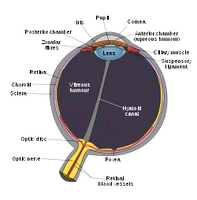In summary, while creationism has evolved diverse labels and strategies for legal and rhetorical purposes, its fundamental essence remains unchanged. That essence is advocacy of miraculous divine intervention, i.e., special creation, in the history of life, and the claim that science must acknowledge special creation or dire consequences for society will follow.
Dire consequences for society? This is precisely the sort of rhetoric used by evolutionists. Skepticism is routinely characterized as anti-science. Diseases will flourish and crops will fall prey to insects without evolution to guide our science. Indeed, the very premise of this paper is that evolution skepticism must be countered. It is a hazard which seeks to return the world to centuries past.
And the fundamental essence of evolution has remained unchanged for centuries. Passages from Lucretius read like modern evolutionary writings. And more recently, the urgings of Enlightenment thinkers laid the groundwork for Darwin and can be found throughout the post-Darwin literature. The essence is the rejection of miraculous divine intervention for a variety of religious and metaphysical reasons. They are repeated ad nauseam today as though they are scientific findings, but they are no different than the evolutionary genre from centuries past.
The persistence of creationism, and the necessity of understanding and effectively opposing creationist movements, can be extremely irritating to those of us who have devoted our careers to researching and teaching about evolution. Why should any time be wasted on those whose religious beliefs cause them to ignore or distort the scientific evidence? However, our situation should be kept in perspective: every science has to deal with the problem of pseudoscience to some degree.
Religious beliefs distorting science? Amazing, I couldn’t describe evolutionary thought any better. Evolutionists, including the author himself, have not hesitated to issue religious mandates for evolution, in spite of the evidence. It would be difficult to think of anything more hypocritical.
Figuring out what flavor(s) of creationism you are dealing with is particularly important in secular forums such as academia, public policy disputes, and court cases, in which creationists usually attempt to hide their underlying theology.
Hide their underlying theology? Unbelievable. This is precisely the evolutionist’s standard procedure. After making theological claims they, incredibly, claim to be doing mere empirical science.
The core idea unifying all the various forms of creationism is the conviction that divine intervention, i.e., special creation, is necessary to explain the diversity of life.
Truly amazing. The core idea behind evolutionary thought is that the diversity of life and origin of species must be explained exclusively by natural laws.
The whole point of the exercise of arguing against evolution is to argue for the interventionist, miracle-working God found in the creationists’ reading of the Bible. In other words, for ID creationists as well as other creationists, the meaning of life, the universe, and everything is on the line, along with the fate of society, over what seems at first glance to be a mere pedestrian question about the scientific correctness of evolution.
The whole point? The whole point of evolution is to argue against the interventionist, miracle-working God. That is yet another fact that evolutionist’s deny.
Everything is on the line? Yes indeed, evolutionists have no choice. They can brook no variation from their strict and dogmatic naturalism.
What should evolution scientists and educators learn from all this? The lesson is something that we already know: history is important. Specifically, history is crucial for understanding creationist movements and the forms they take.
Astonishing. Evolutionists whitewash their own history, or more commonly simply ignore it altogether. For them, Charles Darwin was a nice young man who got in a boat and sailed around the world where he happened to observe evolutionary signs all along the way and then turned into an intellectual revolutionary who practically single-handedly changed the tide of thought on origins. Yes, history, true history that is, is important.
Such a conclusion, if it can be documented, has obvious relevance for a court’s analysis of whether a policy is constitutional. But legal relevance is not the only reason history is important. Often, just asking the questions is enough: deep down, creationists and fundamentalists want to promote their religious views—that’s the whole point of all of this effort, in the end—and they do not require much prodding to do so. Once the sectarian goals are out in the open, it often becomes clear to cooler heads that politicians and courts have been in this position many times before, and that the antievolution policy is unwise because the government’s job is to teach science in science classes, and let people make up their own minds on religious issues.
Deep down? Deep down evolutionists are driven by religion, they are fanatics if ever there were any. Their theology drives them to asanine ideas which they then try to defend with inconsistent and contradictory circumstantial evidence. They are constantly promoting their religious convictions and conclusions.
Nevertheless, however frustrating the creationists may be at times, we should keep in mind the fact that our dispute with them is a peaceful one taking place in a democracy, and that creationism did not appear ex nihilo, but is the product of Western history and deep-seated, very human fears and desires. Exhibiting some empathy deriving from our shared history might go a long way towards reconciling evangelicals with evolution.
Evolutionary thought has a long history. It became particularly popular with the Enlightenment metaphysics and concerns about the role of God in creation. Today’s evolutionary tradition is very much the product of Western history and deep-seated, very human fears and desires.
Evolution is, if anything, a religious idea, and when evolutionists go on the attack watch for the hypocrisy.


















